Media | Articles
Betty Thatcher Oros: Automotive Styling Pioneeress

We recently looked at what may well have been the first two car-based pickup trucks, the 1937–39 Studebaker Coupe Express and the 1941–47 Hudson Cab Pick-up. The ’41 Hudson pickups were also connected to another first, the American automotive industry’s first fulltime female designer, Elizabeth “Betty” Thatcher Oros, who had an important role in styling those trucks.
If the name Oros is familiar to you as a car enthusiast, it’s likely because Joseph Oros was in charge of the design team responsible for the first Ford Mustang. Joe, who previously had worked for General Motors, was not, however, the only pioneering automotive stylist in the Oros family.
Mrs. Oros—Joe Oros’ wife, nee Elizabeth Anna Thatcher, better known as Betty—had her own role in automotive styling history. She was, the record indicates, the first full-time female designer in the U.S. auto industry, perhaps worldwide. She wasn’t the first female car designer, though, since women designers and artists had worked as consultants for color and interior fabrics. Helen Dryden worked for Raymond Loewy‘s studio on Studebaker interiors in the 1930s, and the car company even advertised “It’s styled by Helen Dryden.” Helene Rother was hired by Harley Earl at GM, to work on interiors, again, in 1942 and later was an important consultant to Nash. And Audrey Moore Hodges started in 1944 at Studebaker and was later responsible for the ill-fated Tucker‘s interior.
As for Betty Oros, she was hired in at Hudson in 1939 when she was still known as Betty Thatcher. Most sources consider her to be the first woman to get a full-time job in a domestic automaker’s design studio, and the record seems to indicate she was indeed the first to do any exterior styling, almost two decades before any other women have been credited with exterior styling on a domestic automotive vehicle. Bill Mitchell, who headed GM styling after Harley Earl retired in the late ’50s, hired female designers like Sue Vanderbilt but also said he’d never let a woman head an exterior design team.
Before we get into Betty Thatcher Oros’ story, there needs to be a clarification. A number of sources—including the John Boyd Smith Collection and Wikipedia—attribute the 1941 Hudson pickup’s attractive exterior styling to Betty Thatcher Oros. While Oros undoubtedly worked on exterior trim and has her role in automotive history, the notion that she was responsible for the overall look of the vehicle is a bit like saying that actress Hedy Lamarr invented the cellphone. While Lamarr’s co-invention of radio frequency hopping for secure control of naval torpedoes is conceptually similar to how cellular service works and is arguably a foundational idea, cellphones really weren’t invented until almost a half-century after Lamarr’s patent was granted.
Marketplace
Buy and sell classics with confidence
In an interview conducted by the University of Michigan-Dearborn’s automotive oral history project with her and her husband, recorded in the late 1980s, Betty Thatcher Oros explained that while she worked on exterior trim (her first job being the Hudson sedan’s brand identifying hood-side running lights), most of the sheet-metal styling was pretty much already established, and it wasn’t going to be changed due to financial limitations. Also, while Hudson had its own design team, under the leadership of Frank Spring, Hudson was still buying bodies from Briggs and Murray, whose own styling teams and engineers had significant input into the exterior design of Hudson vehicles.
Betty Thatcher Oros was born Elizabeth Anna Thatcher in Elyria, Ohio, in 1917. Graduating from Elyria High School in 1935, she wanted to go to art school, though her father, an accountant, thought secretarial school was a more practical choice. She enrolled in what was then called the Cleveland School of Arts, formerly the Western Reserve School of Design for Women and today known as the Cleveland Institute of Art. She majored in Industrial Design, which she said she enjoyed “very much,” graduating with honors. She went into the field wanting to design products, though she hadn’t originally intended to be an automotive designer. In possibly another one of those Hedy Lamarr incidents, some sources say Betty was the first woman in America to major in industrial design, but again in the recorded oral history she says there were “other girls” taking industrial design courses.
Perhaps due to the influence and publicity surrounding Helen Dryden, or perhaps because Hudson Motor design head Frank Spring was just a forward-thinking person, he wrote a letter to the Cleveland School of Arts looking for a female designer around the time Thatcher Oros graduated in 1939.
“He had the right idea,” Thatcher Oros said, describing Spring’s motivation. “He thought that the cars should at least appeal to women because, at that time, I guess most families had only one car, and he thought that the woman of the family would have a lot to say about which car would be chosen because of the appearance, never mind whether it ran well or not. So he wanted a female designer, to consult and also do some designing. So he wrote the Cleveland School of Art and they had me to come to Detroit for the interview.”
Thatcher Oros had already received a scholarship for a fifth year at the school, but she wanted to get working. At the interview, Spring wanted to know if she was serious about design and started to ask her questions about cars. “He didn’t know I couldn’t drive, but I had an idea about good design.” When offered the job, she went straight back to Elyria, and on Labor Day 1939 her mother drove her to Detroit. The next day she started working in Hudson Motor Company’s design department.
Thatcher Oros’ initial work for Spring did involve the traditional female role as color and fabric consultant, but she also worked on what she referred to as exterior “decoration” for the upcoming 1941 models. Again, clarifying her role in exterior design, she said, “At the time they weren’t changing the body shape very much, I guess, moving forward. I worked on what they called the side bonnet lights. There was a little triangular light at the front [side] of the hood, that would be on at night, of course, which would be instantly recognizable as a Hudson. That was for the top-of-the-line [model]. Then the less expensive Hudson had sort of a rectangular light. This was all incorporated in the chrome trim that went the length of the car.”
You might think that a running light is a small thing of no great importance, but many of the automotive industries most celebrated designers started out working on things like knobs, switches, mirrors, and lights. To be historically accurate, more than a few celebrated designers also ended up working on those things later in their careers. Designers may be the rock stars of the auto industry, but they can get knocked down a peg or two by senior executives. For example, Camillo Pardo went from designing the 2003 Ford GT supercar to working on mirrors.

For the ’41 Hudsons, including the Cab Pickup and Big Boy, Thatcher Oros also worked on the interior hardware, including the instrument panel. She was particularly proud of her concave radio grille. She was assigned by Spring to work under Art Kibiger, assistant styling director at Hudson and later technical director for styling at American Motors. Kibiger gave her a place for her drawing board by the window of his own office, paternalistically telling her that she shouldn’t be exposed to the “language” used in the all-male design studio. When the interviewer suggested that it was also to prevent her from being a distraction to the male designers, Betty modestly said, “Oh, I don’t think so.”
While I’ve been unable to locate a photo of Betty, her daughter told me that she was an attractive and elegant lady, always well dressed.
“Eventually I did go in the studio after a while,” Thatcher Oros says in the oral history. “After all, designers talk among themselves and talk over the development of what they’re working on. They must have cleaned up their act because I didn’t notice any bad language, and I enjoyed working with them.”
While Kibiger’s actions seems paternalistic and condescending to our modern ears, it seems to me that they accurately reflected the attitudes of the day concerning women in the workplace. Kibiger and Spring understood the need to have women’s input in design and respected Thatcher’s contributions, while at the same time they respected the social conventions of the day.
While some sources erroneously credit Thatcher Oros with the exterior design, one of her regrets was that she didn’t have more influence over the shape of the body. She said that when she was in school the emphasis was on forward-thinking, modern design. While today we might see the ’41 Hudson, including the trucks, as exemplary period designs, at the time Betty was disappointed that due to budgetary constraints her team wasn’t able to make the body “more modern, more streamlined.” There’s more than a little irony in accounts these days that credit her with the overall exterior design of those vehicles. Not only is that an exaggeration at best, but she also wasn’t exactly thrilled with how the vehicles came out.
In 1941, Betty Thatcher married Joseph Oros. The two had met while both were learning design at the Cleveland School. By then, Joe held a job as a designer in the Cadillac studio at General Motors. When the two got engaged, they knew that to avoid any suspicion of conflict of interest, one of them would have to quit their job before anyone in the industry found out about their relationship. Not surprisingly, considering the social standards of the day, it was Mrs., not Mr., Oros who resigned.
In the oral history, Thatcher Oros says that it wouldn’t have been an issue at the time of the recording, and while that sounds like she would have liked to continue her career as a designer she also expressed no regrets about becoming a full-time housewife to Joe and mother to their five children. In retirement, the Oros family moved to Santa Barbara, California. A lifelong lover of the arts, Betty Thatcher Oros served as a board member for both the Santa Barbara Museum and the Symphony League. She died in 2001, but her contribution to the automotive industry lives on.
***
Check out the Hagerty Media homepage so you don’t miss a single story, or better yet, bookmark it. To get our best stories delivered right to your inbox, subscribe to our newsletters.
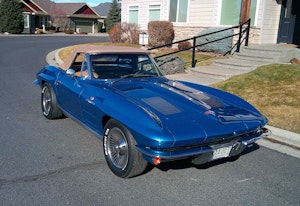
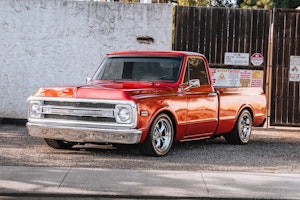
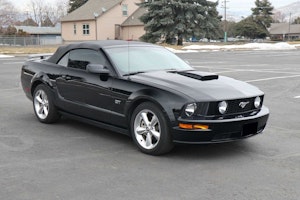

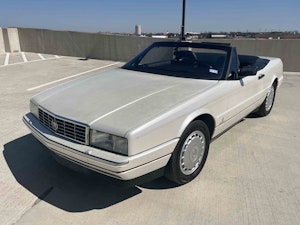



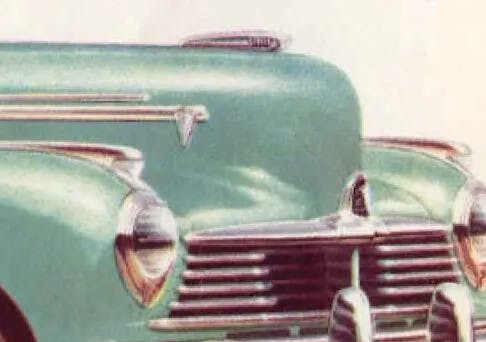
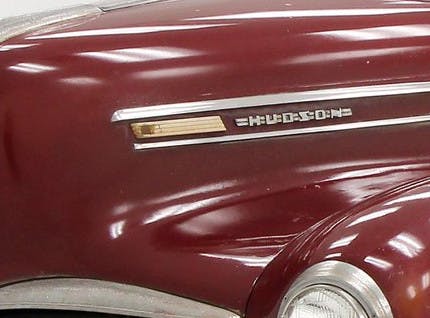



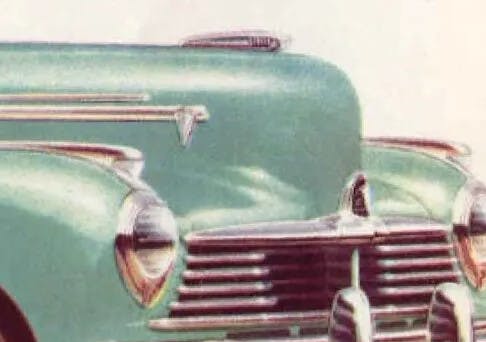
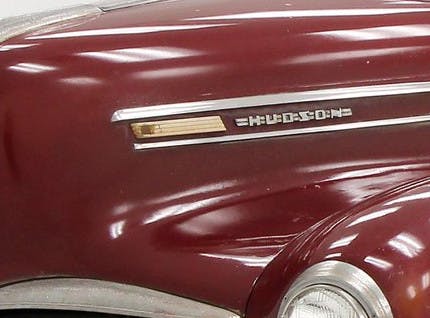
I can’t believe that no-one’s already commented on the term “pioneeress”.
The “ess” appellation was mostly abandoned long ago, with few exceptions, such as “heiress”.
An excellent and well-researched article, though. Great work!
On the other hand, I revere the venery of those old titles, and predict that in a society more and more identified by ‘gender,’ they will be back with a vengeance. I’m married to a former postmistress(!) who works as an executrix so often the family calls her “Execu-Trixie.” We should have more rocketeeresses. It would be astronaughty.
You’ll note, Thatcher Oros didn’t have a hyphen. Now I *really* want to see her picture. You’d think one of those design schools would have a portrait in their hall of fame. Hudson truckers ought to demand it.
Excellent! Touche!
I’d look into “venery”. Don’t get too close, though…
Thank you for your kind words.
The use of a somewhat archaic term was deliberate, so we could get the message across without having to use something like “…the First Female Designer…”
I will say that I think it’s a bit ironic that in current year words with feminine suffixes derived from French are a bit discouraged, while feminine suffixes derived from Latin, like “executrix” mentioned below are more acceptable.
Sorry but the first car based pickup was in 1925 when Ford converted a Model T Runabout to a “Pick-up” by substituting the trunk for a bed with tailgate. Ford got the idea and the name “Pickup” from Christian Wyss, a dairy farmer in Tillamook, Oregon after visiting his farm in 1924 to note and photograph Mr. Wyss’s light truck fabricated from a 1915 Model T touring car.
Thanks for your information.
If you’ll note, the phrase, “what may well have been,” indicates that it’s possible the Hudson and Studebaker pickups were not the first car-based trucks. It’s a bit like saying that Eddie Van Halen or Frank Zappa “invented” the string tapping technique on guitar. Someone will find a film clip from some jazz or flamenco player doing it in the 1930s.
By the way, Ford started making the Model TT truck in 1917, supplying thousands to the U.S. Army, though until 1924 they didn’t come from Ford with complete bodies. I suppose one could debate how much the TT was “based” on the regular T, since it used mostly T mechanicals, but it had a beefier frame, a stronger rear axle, and a longer wheelbase. It was also sold as a different model than the T car.
I really think we’d have got the idea that Betty was a female from her name. “pioneeress” was gratuitous (and snarky).
It’s a nice to read about the automotive pioneers. I find more inspiration from the old crew than today.
Amen! I still can’t get over what folks like Kettering accomplished.
I think one of the more impressive things about Kettering is that he was accomplished in more than one engineering discipline. Besides his work on electrical systems he had a hand in the development of tetraethyl lead (putting aside the environmental and health problems of leaded gasoline).